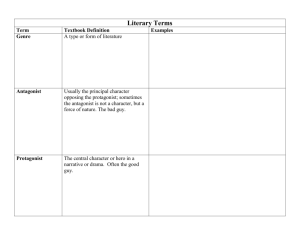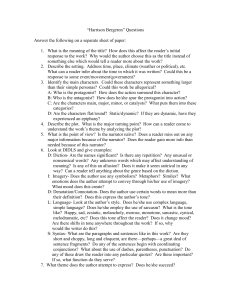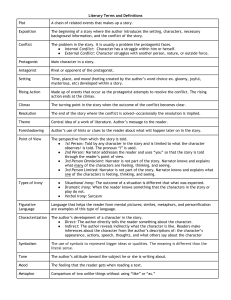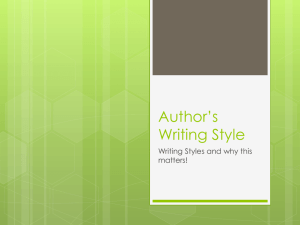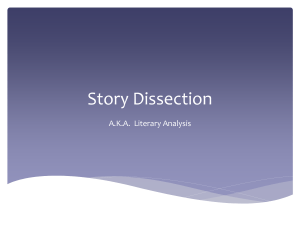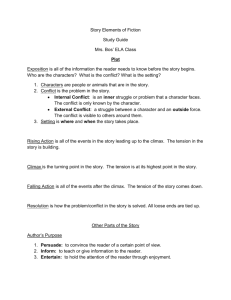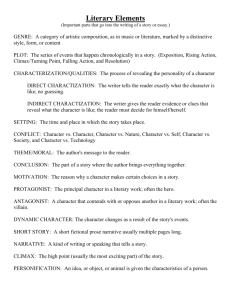PowerPoint Notes
advertisement
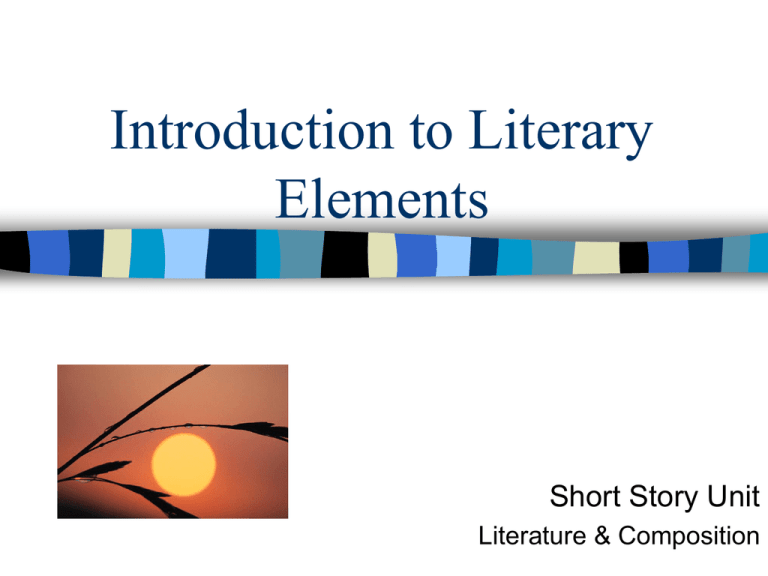
Introduction to Literary Elements Short Story Unit Literature & Composition Fiction Prose/narrative (story form writing) about imaginary people, places and events Something that is made up--- not factual Can seem realistic Plot Climax Exposition Resolution (Denouement) Turning Point (Inciting Incident) Foreshadowing The use of clues or hints by the author to prepare the reader for what will happen later Can use background information, mood & music Conflict Character vs. Character Character vs. Society Character vs. Self Character vs. Nature Character vs. Technology/Machine Character vs. Supernatural/Deity Characterization What the character says What the character does What the character thinks/feels What other characters say & think about him/her The character’s physical appearance or environment Dynamic Characters Those who transform or evolve in the story; usually major characters Static Characters Those who do NOT change or grow, but remain the same; usually minor characters Protagonist The character with whom the reader is meant to sympathize The character who grows or learns something Often the “hero” Antagonist The character (or force) who stands in conflict with the protagonist Often the “villain” Setting Time/When Place/Where Social Atmosphere (affected by historical era, social movements, and crises) Tone • The author’s attitude toward his/her subject • Emotion words are used to label this element in a story (e.g. – angry, indifferent, excited, sad) Mood / Atmosphere The reader’s emotional response to the characters and events of a story Often influenced by setting and tone Emotion words also used here Symbols Concrete objects that suggest abstract ideas Something that stands for something else For example: red rose=love Point of View: Perspective First person: narrator is a character in the story (“I” perspective) – can be unreliable! Third person limited: story is told through the thoughts & feelings of ONE character - the reader may feel like she is looking “over the shoulder” of a character (“S/he”perspective) Third person omniscient: narrator is NOT a character in the story; story is told from a godlike perspective; can relate knowledge about all characters at any time Irony Situational: when the opposite of what is expected occurs Verbal: when a character says one thing but means another (the opposite) Dramatic: when the audience/reader knows something that a character does not know Theme The universal truth revealed about life Must be stated in a complete sentence Avoids using clichés, giving advice or stating a rule

